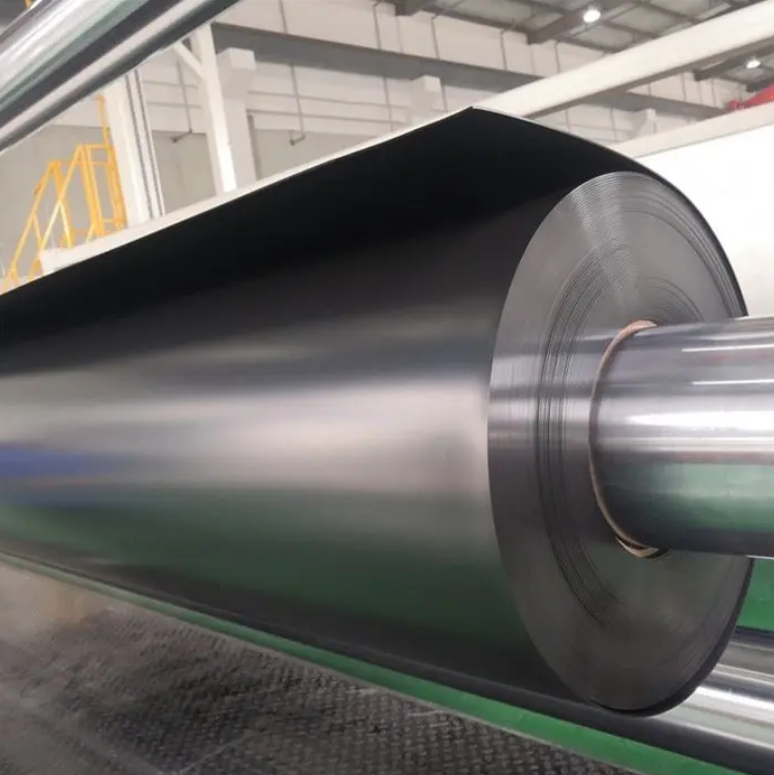- Understanding the Role of Geomembrane Liners in Waste Management
- Innovations in Geomembrane Liners for Water Management
- Geomembrane Liners: A Comprehensive Guide
- The Future of Geomembrane Liners in Civil Engineering
- Geomembrane Liners: Enhancing Landfill Stability
Manager:Alvin Wang
WhatsApp:+62 8983806051
Tel:+86 10-5797-1075
Email:steelwang@okorder.com
Address:3rd Floor, No.2 Building, No.1 Sanlihe Road
What is the most widely used HDPE geomembrane in current use?
High-density polyethylene (HDPE) geomembranes are important materials for a variety of engineering and environmental purposes that provide critical containment, protection, and barrier functions. Choosing the right hdpe Geomembrane product from among many varieties available in the market can be difficult. In this article, we explore the most popular HDPE geomembrane currently in use and discuss its main features, uses and advantages.

1 Overview of HDPE Geomembrane
HDPE geomembranes are plastic sheets made of high density polyethylene resin which is a thermoplastic polymer known for its strength, durability and resistance to chemicals. These geomembranes are manufactured by a process called extrusion where molten HDPE resin is pushed out to make long rolls of varying thicknesses . In fact, there are smooth and textured surfaces as well as different thicknesses and colors for use in many applications.
2 Types of HDPE Geomembranes
There exist several types of HDPE geomembranes on the market each with individual properties, features and applications. For instance, smooth ones are applied where hydraulic performance requires very low roughness such as pond lining system; reservoir caps among others whereas textured type is used when increase frictional force or interface shear resistance is desired like liner systems or slope stabilization in landfills.
Also available are various thicknesses of these membranes ranging from thin liners used for ornamental ponds to thick liners employed for hazardous waste containment or landfill sites. Heavy gauge GM's exhibit higher puncture resistance hence mechanical strength thus being appropriate for demanding civil engineering ecological applications that require durability alongside reliability.
3 Applications of HDPE Geomembrane
HDPE geomembranes find application in many engineering and environmental areas where fluids gases or contaminants need to be prevented from migrating across them. One such application involves landfill liners with their caps which serve as crucial solid/hazardous waste containment barriers. As well, hazardous waste containment facilities employ HDPE geomembranes while others are used in impoundments for tailings from mining and industrial ponds.
In environmental protection projects, HDPE geomembranes are used to line reservoirs, ponds and canals so as to prevent any seepage of water thereby ensuring that there is adequate storage and distribution of water. They are also employed in clean-up operations of sites where the soil and groundwater are contaminated by pollutants by containing or isolating the polluted ground/soil thereby facilitating remediation. Furthermore, HDPE geomembranes are used in erosion control and slope stabilization projects to prevent soil erosion and slope failures along embankments, shorelines and riverbanks.
4 Advantages of HDPE Geomembrane
HDPE geomembranes have several benefits which make them a favorite choice for most engineering and environmental applications. Their strength, durability and chemical resistance offer long-term performance under harsh environmental conditions. On top of this, these materials do not allow liquid or gas to pass through hence effective containment systems which minimize contamination into the environment.
Additionally, installation costs are significantly cut due to their easy handling criteria besides maintenance issues being at minimal levels. Thus they may be joined together using either heat or chemical fusion techniques which create jointless membranes which cannot allow liquids to go through them. At the same time, these products are light weight yet flexible thus simplifying handling processes when it comes to various types of geomembranes.
Another plus for HDPE geomembranes is their environmental friendliness. HDPE is a recyclable material that can be repurposed and reused in other applications, thereby reducing waste and saving natural resources. Moreover, HDPE geomembranes are not susceptible to bio-degradation which means they can be used for long durations where microbial exposure is a concern.

5 Conclusion
In conclusion, HDPE geomembranes are vital materials for multiple engineering and environmental uses that offer essential containment, protection, or barrier functions. For instance surface texture, thickness and application requirements must be considered while selecting from among many HDPE geomembrane products available on the market today . The key features, applications as well as benefits of HDPE geomembrane will enable engineers as well project managers to make informed choices when choosing these materials for their projects.
- Previous:Why is HDPE geomembrane better than PVC?
- Next:What are the applications of HDPE geomembrane?
-
2024-12-05Geomembrane Liners: A Comprehensive Guide






